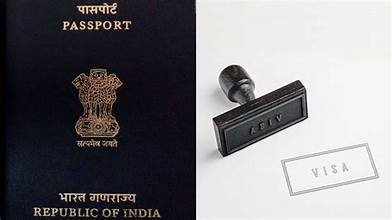When traveling to or from India, understanding the entry and exit procedures is essential. For foreign nationals, the Indian visa process often begins at one of India’s airports or ports of exit. These locations play a crucial role in regulating the movement of people across borders, ensuring that travelers comply with Indian immigration rules and regulations. This article provides a detailed guide on Indian visa airports and ports of exit, including how they function, their significance, and what travelers need to know for a smooth journey.
Indian Visa Airports: The First Point of Entry
India boasts a wide array of international airports where foreign nationals can arrive to begin their visit. The major Indian visa airports serve as the primary entry points for tourists, business travelers, students, and others arriving in the country. Some of the most notable Indian visa airports include:
- Indira Gandhi International Airport (Delhi): As the capital city’s primary international airport, Indira Gandhi International Airport is one of the busiest in the country. It handles millions of international passengers each year and offers a wide range of visa processing services for foreign travelers.
- Chhatrapati Shivaji Maharaj International Airport (Mumbai): Mumbai’s international airport is another prominent gateway for travelers coming to India. As a hub for business and commerce, it caters to many passengers arriving for both leisure and professional purposes.
- Kempegowda International Airport (Bengaluru): Bengaluru is a major tech city in India, attracting many international visitors. Kempegowda International is one of the key Indian visa airports, with efficient immigration and customs procedures.
- Chennai International Airport: Serving the southern region of India, Chennai International Airport is another key entry point for travelers, particularly from Southeast Asia, the Middle East, and other neighboring countries.
- Netaji Subhas Chandra Bose International Airport (Kolkata): Kolkata serves as an important gateway for travelers coming from East Asia, Southeast Asia, and other parts of the world, making it one of the vital Indian visa airports.
Each of these airports is equipped with state-of-the-art facilities to process travelers’ visas and immigration clearances. Travelers should ensure they have all required documents, including valid visas, before arriving at these entry points.
The Role of Ports of Exit in Indian Visa Procedures

In addition to airports, India has several seaports and land border points where travelers can exit the country. Ports of exit are crucial in managing the flow of people leaving India, ensuring compliance with visa regulations, and recording exits from the country.
- Mumbai Port: This major port handles not only cargo but also international travelers leaving by cruise or other maritime services. Those exiting India by sea often use this port as a point of departure.
- Chennai Port: Similar to Mumbai, Chennai serves as a departure point for sea travelers. It is another essential port of exit for those leaving India by water transport.
- Cochin Port: Located in Kerala, Cochin Port is a key exit point for travelers taking cruises or other maritime routes from India.
- Land Borders: India shares borders with several countries, including Pakistan, Bangladesh, Nepal, Bhutan, Myanmar, and China. The land border crossings, such as those at Attari-Wagah (Punjab), Benapole (West Bengal), and more, serve as exit points for travelers leaving India overland.
When exiting India, travelers must ensure that their visa and immigration papers are in order, just as they do when entering the country. The exit points are equipped to handle the necessary documentation checks and ensure that all travelers leave legally.
Understanding Indian Visa Rules at Airports and Ports of Exit
Whether entering or exiting India, travelers must understand and comply with Indian visa rules at both airports and ports of exit. The Indian visa system is stringent, and non-compliance with regulations can lead to fines, detention, or being denied entry or exit.
- Entry Visa: When arriving at one of the Indian visa airports, travelers need to present their approved visa. India offers various types of visas, including tourist visas, business visas, and student visas. Depending on the purpose of the visit, travelers should ensure they apply for the correct visa type. For instance, a tourist visa would not permit business-related activities, while a student visa would not be valid for tourism.
- Exit Visa: Exiting India requires travelers to present documentation that proves they are allowed to leave the country. This can include valid exit stamps in their passports or documents from Indian immigration authorities that authorize their departure.
- Overstay Penalties: Travelers who overstay their visa in India are subject to penalties, which could include fines or even deportation. It’s essential to check the visa validity dates before planning any travel. For longer stays, it’s often necessary to apply for an extension or a new visa to avoid overstaying.
Special Considerations for Ports of Exit
While the majority of travelers will use INDIAN VISA FOR AUSTRALIAN CITIZENS the country, certain situations may require travelers to exit from ports of sea or land borders.
- Sea Travelers: Passengers departing India by sea from ports such as Mumbai, Chennai, and Cochin need to undergo immigration checks and show their visas before departure. Cruise travelers should ensure that they have both entry and exit permits arranged with the authorities in advance to avoid delays or complications.
- Land Travelers: Those crossing into neighboring countries overland must also comply with visa regulations. Border crossing points, such as those at Wagah (Punjab), provide exits for travelers heading to Pakistan, while those leaving for Bangladesh can cross through the Benapole border. Travelers should be aware of the visa requirements for both India and the country they are entering.
Conclusion: Key Tips for Traveling Through Indian Visa Airports and Ports of Exit
Navigating Indian visa airports and ports of exit can be a seamless process if travelers are well-prepared. Here are some essential tips to keep in mind:
- Check Visa Requirements: Before departure, ensure your visa is valid and suitable for the purpose of your trip. Be aware of the visa expiration date, and apply for extensions if necessary.
- Know the Exit Procedures: Whether traveling by air, sea, or land, familiarize yourself with the specific exit procedures at Indian visa airports and ports. This includes knowing where to go for immigration checks and having your documents ready.
- Be Aware of Penalties: Overstaying your visa can result in hefty fines, deportation, or future entry bans. Always check the validity of your visa before leaving India and plan ahead for any extensions or reapplications.
By staying informed about Indian visa airports and ports of exit, travelers can ensure a smooth journey in and out of India, complying with all relevant immigration rules along the way. Whether entering India through a major airport or leaving by sea from a coastal port, a little preparation goes a long way in ensuring hassle-free travel.

